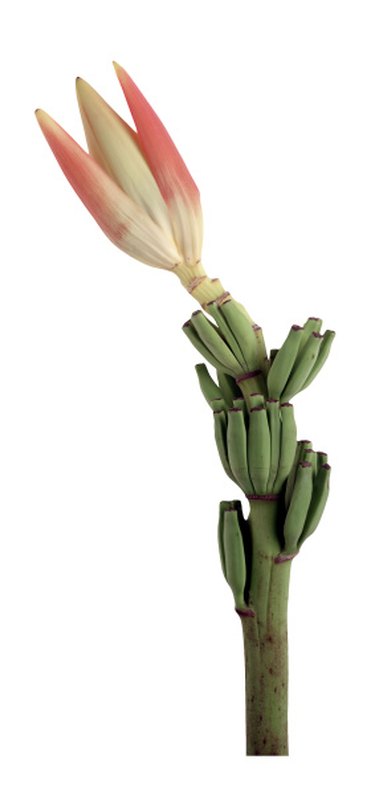
Banana trees that are at least 1 year old and protected from frost may produce bananas. The flowers of banana trees require no pollination. Pollinated flowers actually produce dry fruit full of seed and lacking pulp.
Pollination
Video of the Day
Female flowers bloom first, in groups called hands. These produce the fruit. Sterile flowers then bloom, followed by the male flowers, which produce the pollen. In the wild, birds move the pollen from the male to the female flowers. Cultivated varieties of banana trees are pollinated in the presence of wild banana trees.
Video of the Day
Fruiting
Unfertilized female flowers in cultivated varieties produce fruit after the flower goes too long without fertilization. The ovules cease developing, and the fruit pulp swells as the bananas grow. The purplish bracts that shelter the hands of flowers roll back, and the starchy, green bananas grow in the same cluster formation. The bananas can yellow either on the tree or hung in a cool, shaded, well-ventilated area.
Time Frame
Flowering stalks form once the banana trees are 10 to 15 months old. Within three to six months—depending on variety and weather conditions—bananas will be ready for harvest. Harvesting bananas while they are still green prevents loss or damage from insects and birds. The website of Texas A&M University's AgriLIFE Extension suggests bagging the fruit cluster with an apple slice to shorten the final ripening period from about three days to a day.